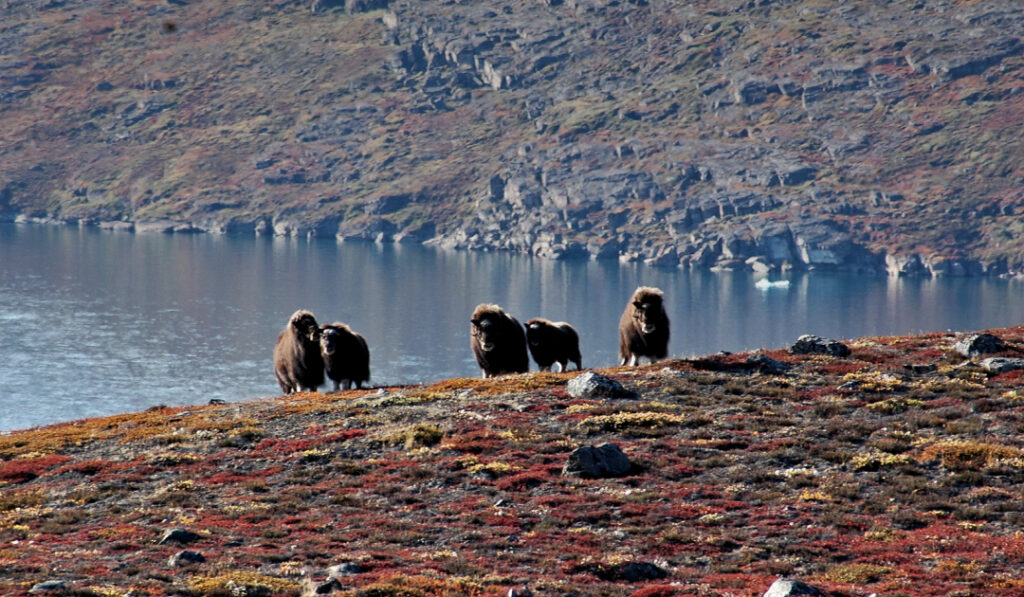
The Arctic is not just a 14 million square kilometre ocean. The surrounding land masses are also part of it. And their inhabitants are just as affected by the alterations due to climate change as their oceanic fellow inhabitants. In a comprehensive report, dozens of experts summarized the research of about 200 scientists and published the situation of animals and plants in the Arctic land region.
The changes that climate change is bringing to the Arctic are large and, above all, rapid. Too fast for numerous animals and plants in the far north. Adaptations to the extreme conditions of the Arctic, which have evolved over a long period of time, now put organisms at a disadvantage in the face of the new climatic conditions and immigrating competitors. This affects both animals and plants. This is the conclusion of the new, very comprehensive report by CAFF (Conservation of Arctic Fauna and Flora), a working group of the Arctic Council. The report, published just before the Arctic Council meeting, is the most complete study to date from the entire Arctic region that has examined impacts on land-based biodiversity. The report is part of the Circumpolar Biodiversity Monitoring Program (CBMP).
The report details how animals and plants in different regions react to climate change. In summary, however, it can be said that the various species and groups react very differently to climate change. A consistent pattern cannot be discerned, the experts write in their report. Changing weather conditions and an earlier start to spring lead to poor breeding conditions. It is also likely that many of the migratory bird species that spend only a seasonal period in the Arctic will come under additional pressure on their way and in their wintering areas. Bird species migrating to the Arctic from the East Asian region in particular showed a sharp population decline. In contrast, bird species migrating from the African-Eurasian region to the Arctic are stable. Nevertheless, more than one-fifth of all bird populations in the Arctic are now declining.
With the mammals, the situation looks quite different. According to the experts, musk oxen and Arctic foxes show positive population trends, while the numbers for reindeer on the mainland are decreasing more and more. This is due to more cold snaps in the spring leading to icing of feeding grounds. And for small rodents like lemmings, there are no apparent trends, but rather regional differences in the situation. The experts conclude that little consistent data is actually available for terrestrial mammals. Differences in monitoring programs, data collection, and cooperation at the international level make it difficult to make comparisons and to draw firm conclusions about how populations will behave in the future.

The vegetation also shows a tendency towards a greener Arctic. Particularly in the southern Arctic regions, the bush encroachment of the actually grass-rich tundra is increasing. According to the experts, mosses and lichens suffer most from this. Since 2001, experts say, Arctic plant productivity has moved significantly upward. However, this has a negative impact on the permafrost, as in winter a blanket of snow spreads over the ground like an insulating layer, preventing it from freezing. As a result, larger and larger parts thaw out in the spring, releasing methane and carbon dioxide, other greenhouse gases. Researchers are also noting an increase in the immigration of new plant species. In most cases, however, these are not yet to be considered “invasive”. However, there is also a call for increased efforts in the area of long-term studies.

Arguably the most important finding in the State of Arctic Terrestrial Diversity report, however, may be the call for more and strengthened monitoring programs. This is because the results of efforts to date show trends, but allow few firm conclusions to be drawn. The experts call for better coordination, standardization of data collection methods and, above all, greater involvement of the local population and more “citizen science” projects to achieve greater geographical coverage. In particular, cooperation with local residents needs to be strengthened. This is a concern that is also being called for by Inuit associations in the Arctic Council. After all, it is they who are on the front line and have been feeling the effects of climate change for decades.
Dr, Michael Wenger, PolarJournal
Link to the main page of the report: State of the Arctic Terrestrial Biodiversity
More on the subject:









